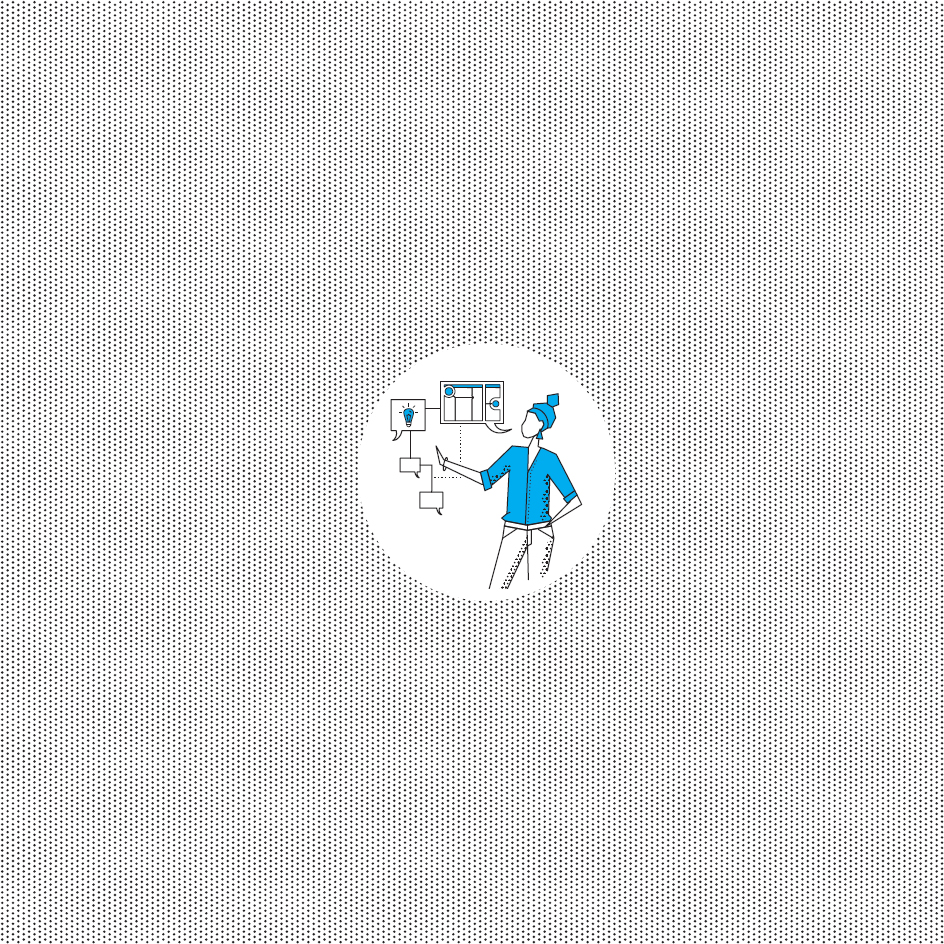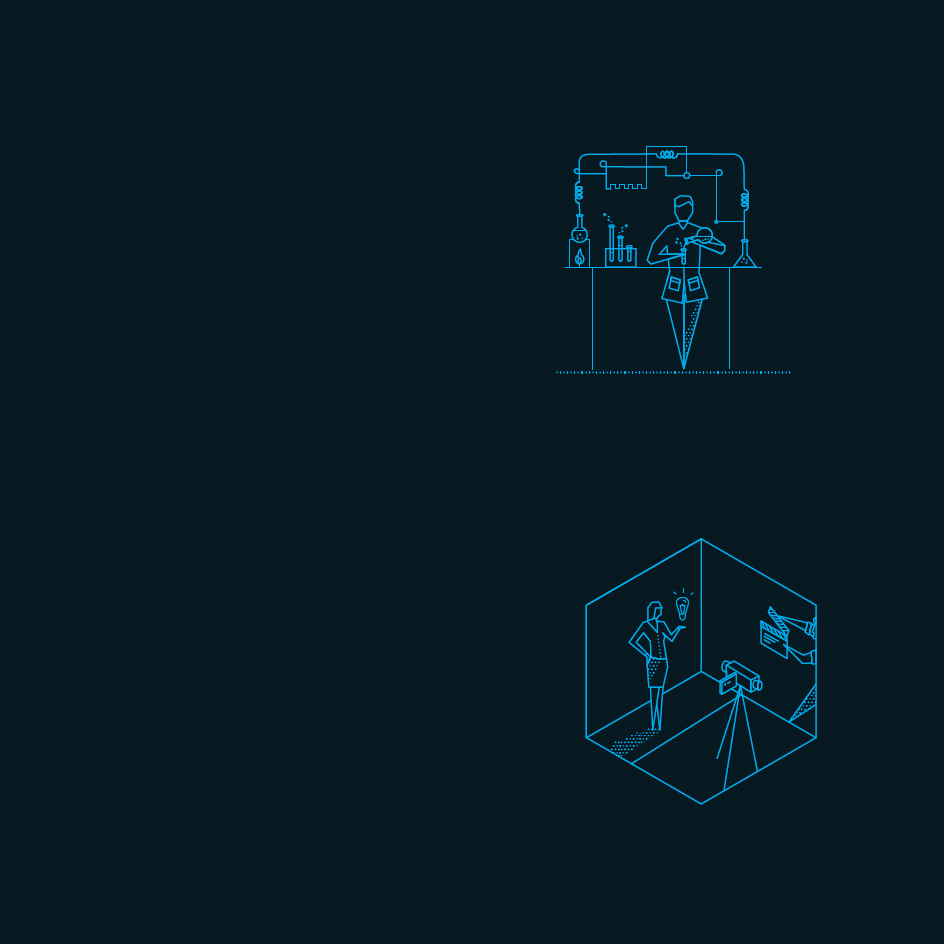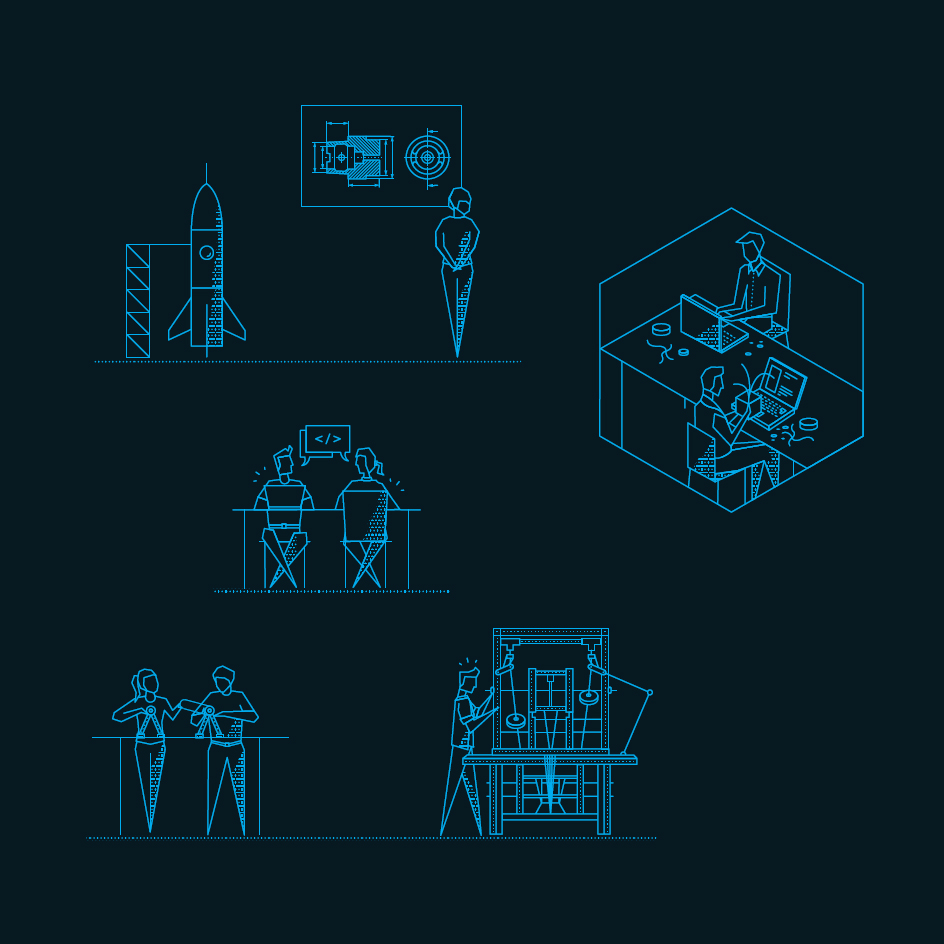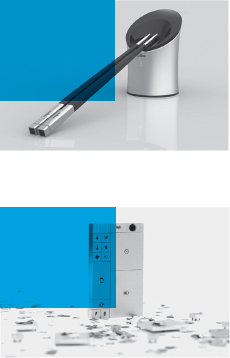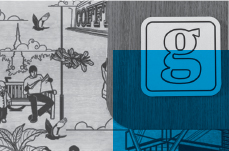So, you've unpacked a consumer trend with your team using the Consumer Trend Canvas, and you've ended up with a new innovation that will both reshape your existing customers' expectations and bring you countless new customers. Fantastic!
Now, how do you stop your shiny new idea from gathering dust or getting kicked to the curb by a skeptical committee? How do you bring it to life? How do you confirm it's worth doubling down on?
This section is designed to help you find the answers to those questions quickly, cheaply, and effectively, via half a dozen trend-based strategies that will get your idea out of a planning document and into customers' hands.
[5.1] The First Yards Make those initial steps count.
Despite all the pressure the Expectation Economy heaps on you, there's also never been a better time to be an innovator. Just as a host of macroforces—transparency, globalization, democratization, participation, personal expression, and more—have transformed customers' expectations, organizations' innovation capabilities have been radically enhanced as well.
The old world of innovation was characterized by its slow pace, high cost, and near-blind leaps of faith required when taking something to market. In contrast, the readily available, quick, and cheap approaches to building, testing, validating, and launching new innovations now mean that there is no excuse not to produce something that customers want.
Because we are trend watchers, we don't work with our clients to bring new ideas right through to market*. However, in the course of tracking emerging trends, we do see many of the same strategies being used again and again by successful innovators. Indeed, pop-ups and crowdfunding are customer trends themselves as well as launch strategies. Use the approaches featured in this chapter to inform and inspire your trend-driven innovation launches. Good luck!
A QUICK NOTE ON RISK
Get your scrapbook of business book clichés ready!
Assuming this isn't your first innovation rodeo, you'll have seen plenty of ideas that some higher-up has deemed too risky or unsubstantiated, whether it was an emailed photo of a scrawl on the back of a napkin or a robust and detailed strategy your team conceived during a weeklong offsite meeting. Even if you are the CEO or work alone, you may have had friends, peers, family, or your own inner skeptic shooting down an idea, highlighting everything that might go wrong or the challenges you will face.
Yet the business truism is, of course, absolutely true: “If something is completely risk-free, it is no longer an opportunity.” Don't worry. We don't expect you to give a coffee mug emblazoned with that quote to your CFO (although that would be awesome). However, to delight customers and surpass their expectations, you (and your CFO) must accept a certain level of risk.
Trend-driven innovation does not, unfortunately, eliminate uncertainty (see the Failure Gallery in Chapter 2 for a raft of on-trend ideas that didn't quite work out). There are still endless hurdles to be overcome: production, distribution, marketing, and many more.
However, if you've followed the methodology this far, your ideas will at the very least be deeply anchored in core consumer needs, inspired by businesses that are already raising expectations, and primed to capitalize on change, rather than hide from it.
Let's look at half a dozen routes to market that will inspire your launch strategies.
VAPORWARE
Test demand with virtual proof-of-concepts.
Of all the new strategies featured in this chapter, this one is perhaps the hardest for many professionals to get their heads around, as it involves going to real customers, not just focus groups with products that don't exist. Yet.
Vaporware is a computing term that refers to products that are announced but never actually manufactured. Now we're obviously not suggesting you intentionally mislead customers. However, it's never been easier to create supporting material for a planned new product or business concept, thereby allowing you to gauge the reaction before deciding whether to proceed.
One of the quickest and easiest approaches is to invest $100 into online advertising. Make your pitch. Do people click on the ad? If not, then perhaps the point of tension you are resolving is less acute than you expected. Go one step further and create a splash page detailing your upcoming product, and ask people to sign up to be notified when it launches. Do they?
Alternatively, virtual prototypes are almost free to create and share with the world. Take advantage of this and pull together a beautiful video mockup of your new concept. Once you release the video, you'll soon discover whether it excites people, as the two examples opposite discovered in spectacular fashion.
KUAISOU CHOPSTICKS
“SMART” PRODUCT SPOOF FINDS FAVOR WITH CHINESE CUSTOMERS
Chinese web giant Baidu originally released a video about its contamination-sensing “smart chopsticks” as an April Fool's prank. However, the video struck a chord with food safety-conscious Chinese viewers who had been burned by multiple recent food scandals. Indeed, the video created so much excitement that the company developed a working prototype, which Robin Li, the company's CEO, presented at the Baidu 2014 World Conference. The Kuaisou chopsticks can test the pH levels of drinking water and detect recycled cooking oil—known locally as “gutter oil”—by monitoring TPMs (total polar materials), which indicate freshness. Data is relayed to an app for instant results.
PHONEBLOKS
DESIGNER'S CONCEPT BECAME A GOOGLE-SUPPORTED REALITY
Dutch designer Dave Hakkens developed Phonebloks, a concept for a modular smartphone, which can be upgraded with new components to reduce e-waste. After creating a video detailing the concept, he turned to “crowdspeaking” site Thunderclap—where supporters “donate” social media posts, rather than money—aiming to attract 500 supporters. Within a month, over 900,000 people had pledged their support. Motorola then announced it would work with the Phoneblok community on Project Ara, its open-source, modular phone effort. In early 2015, Google (which acquired the Project Ara team) announced the modular Spiral 2 phone would be piloted in Puerto Rico.
HACK DAYS
Use trends to power a hackathon.
The first recorded “hackathon” took place in 1999, when 10 programmers gathered in Alberta to work on the OpenBSD operating system. Since then, the practice of bringing people together for a day, night, or weekend to focus intensely on a specific theme or problem has turned into a phenomenon, with events hosted by students, cities, agencies, corporates, nonprofits, governments, and more. The Facebook “Like” button was invented at an internal hackathon. British Airways organized a hackathon on a flight from San Francisco to London in 2013. Guns N' Roses guitarist Slash organized a “slashathon” to ask fans to think about how he could promote his new album.
Indeed, hackathons are no longer only attended by software developers, but now often simply aim to bring people together to ignite creative approaches and fastpaced problem solving. Consumer trends provide the perfect fuel (along with coffee and pizza!) for generating ideas that are focused on solving people's problems.
Before hosting a trend-driven hackathon, use the Consumer Trend Radar to determine which trends relate to the hackathon's overarching objective. If you already know the trends you want to work with, you can kick off the day with a Consumer Trend Canvas ideation session—as Alfa-Bank did opposite—before moving on to the protyping and pitching phases.
ALFA-BANK
42 Agency, a Moscow-based advertising agency; and Alfa-Bank, the largest privately owned bank in Russia, organized a 24-hour trend-powered hackathon in 2014 that led to the launch of a novel bank account product.
At the start, participants were presented with several consumer trends, including CURRENCIES OF CHANGE. As we saw in the previous section, in this trend people are incentivized to achieve their personal goals (such as exercising more) with increasingly innovative, fun, and ultimately relevant rewards. They then unpacked these using the Consumer Trend Canvas.
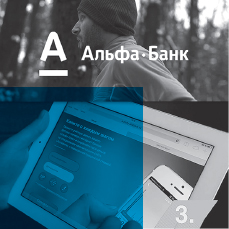
Combining the emerging customer expectations around relevance and personalization with their knowledge of Russian consumers, one team developed a concept for a new type of bank account. They pitched an app-based system that syncs with fitness trackers to allow customers to benefit financially from exercising—by having money moved into an account with a higher rate of interest.
The idea was launched to the public just one and a half months after the hackathon, as “Alfa Activity.” Customers can connect their wearable fitness tracker (such as FitBit, Jawbone UP, or RunKeeper) to their bank account, and as in the original concept, every step taken sees money transferred from their checking account into a special savings account paying a higher interest rate than is otherwise publicly available.
Alfa-Bank reported that by December 2014 (nine months after launch), more than 1 million kilometers had been tracked by Alfa Activity customers, who were saving at twice the rate of the bank's average customers, and exercising 1.5 times more than the average Moscow resident. A win-win all round!
PROTOTYPING
Get making!
As with business plans, no innovation idea survives its first contact with people. Building a prototype will bring your idea to life and allow you to start collecting that all-important feedback.
There are two types of prototype you should be aiming to create—even by the end of your ideation session or hackathon—internal proof of concept/demonstrations or more advanced customer-facing, at least semi-functional products.
Internal concepts are great at building support for your idea.
They can be totally virtual (as basic as mocked-up diagrams in Keynote), or physically built (use clay, Legos, or cardboard). These early models will obviously require people to look beyond their current form, but putting something in people's hands to tinker and play with will get their minds to open up to the possibilities.
Remember to follow design agency IDEO's advice when prototyping, and present colleagues or clients with multiple prototypes. Having two or more versions spurs discussion and avoids “take-it-or-leave-it” decisions.
Also, push yourself to think beyond building just conceptual models. Prototyping can—and for digital services, increasingly should—also extend to launching actual customer-facing, functional models that will test and validate customer demand, the holy grail when launching new ideas.
Mint Digital, a digital and product development agency based in London and New York, runs an annual hackathon and prototyping program they call “Four Days to Launch” (4D2L), where they aim to conceive and birth entire new business ventures. By the final day, if not before, teams need to have an operational business (not just virtual mockups). At the very least, the new businesses should have genuine users, with revenues if not actual profits the real goal!

Indeed, the company has used rapid prototyping and hackathons to launch a number of side projects cum minibusinesses recently. One such project is DeskBeers, a subscription service delivering local craft beers to office workers on Friday afternoons. Strong demand saw it spun out as an independent company, raising approximately $175,000 in equity crowdfunding in January 2015.
You might not plan to start a whole new venture, but it is a powerful challenge: could you create and attract customers to a new business in a matter of weeks or even days?
POP-UP PROOF
Versatile. Affordable. Exciting.
Since we first coined the phase “pop-up retail” in 2004, the trend (and customers' love for it) has shown no sign of abating.*
Refer back to the core elements of trends, and it's easy to see why pop-ups resonate with customers. They tap into the basic desire for novelty and excitement, while the shift toward even-greater abundance means that it's hard for people to know what to pay attention to. At the same time, pop-ups subvert the expectation that everything will be always available as and when needed and, as such, demand customers' attention.
Pop-ups also work for businesses. Their limited scope makes them fertile testing ground for your trend-driven initiatives. Pop-ups are affordable, they can be deployed almost anywhere (from shipping containers to subway stations), and they allow you to try new and creative concepts.
Indeed, pop-ups aren't limited to simply being retail outlets. You can launch almost any idea as a pop-up experience: create a space where customers can interact with your new offering, give away free samples, teach people how to use a new product, gather feedback, and more.
THE GUARDIAN
FROM SMALL TO LARGE SPACES
The U.K. newspaper opened a pop-up coffee shop, #guardiancoffee, in London's BOXPARK (itself a pop-up mall of shipping containers—how meta) as part of its “open journalism” initiative. Following the initiative, the newspaper announced the development of the Midlands Goods Shed, a 30,000-square-foot space that will become an event space and, of course, a coffee shop.

IKEA
TRIALING WITH TRAVELERS
IKEA has run a number of novel pop-ups in Paris, including creating an open access lounge at the Roissy-Charles de Gaulle airport, which included beds for passengers to lie on. This followed the installation of a 54-square-foot “apartment” inside the city's Auber metro station, where six people lived for five days in order to promote its new range of space-saving furniture.
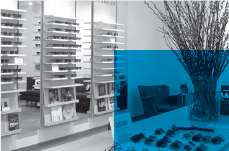
WARBY PARKER
CLICKS-TO-YURTS-TO-BRICKS
Much has been made of Warby Parker's transformation from online eyewear e-tailer to a retailer claiming sales per square foot second only to Apple. Yet it wasn't a blind leap. Before launching its first physical store in 2013, Warby Parker's founders ran makeshift shops in their apartment, their office, and multiple pop-ups (including a repurposed old school bus and a yurt in a SoHo garage!).
PRE-TAIL
Validate and build a customer base even before launch.
In 2014, people pledged over $1,000 a minute to as-yet-unrealized projects on Kickstarter alone. For customers, the attractions of crowdfunding platforms are obvious: a sense of connection with the project's creator, being ahead of the mainstream, access to exclusive perks, and the thrill of finding a truly exciting or useful or relevant product. Indeed, we've already touched on how these crowdfunding PRE-TAIL platforms help drive the Expectation Economy forward (see Chapter 1).
But crowdfunding gets even more interesting when we look at the opportunities it presents to trend-driven innovators. Finally, you have a method of assessing genuine customer demand by confirming whether customers will actually go all the way to entering their credit card details and commit to purchasing your upcoming product.
That's not to say that crowdfunding is the easy option. Far from it. Exposing your product to the crowd requires a level of transparency and communication for which you need to prepare meticulously. But done well, it can be a great route to building an early and evangelistic customer base. That's why big brands are now joining garage entrepreneurs in pursuing PRE-TAIL launch strategies. However, existing resources and bigger budgets should make crowdfunding a strategy that is more about generating excitement rather than sharing risk. The idea is to make early purchasers feel like partners, not suckers.
SONY
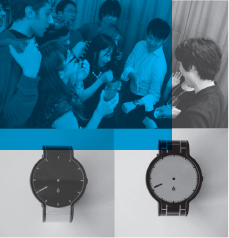
In November 2014, the minimalist e-ink FES Watch raised over $23,000 in its three-week campaign on the Japanese crowdfunding site Makuake (beating its target of $17,000). Fashion Entertainments, the project's creator, then revealed it was in fact part of electronics giant Sony. The brand announced that it had released the watch under a pseudonym in order “to test the real value of the product.” Following this, Sony then launched its Qrio Smartlock—a connected lock that enables the owner to open their door with their smartphone and share virtual entry “keys” via social apps—on the same site. The project was also successfully funded, raising over $200,000. Kunitake Saso, a customer insight specialist involved with both projects, explained that “crowdfunding platforms offer a chance to quickly see how users engage with a new product and to better understand the potential of the idea before launching it. This process allows Sony to act like a nimble entrepreneur.”
NO BUDGET, NO PROBLEM
Learn from these ultra-affordable, trend-driven innovations.
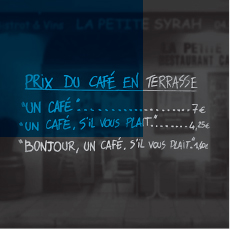
Nothing can be more frustrating than identifying an unmet customer expectation and generating a compelling idea to meet it, only to be told there is no budget available. However, subscribe to the notion that trend-driven innovation is about resolving points of customer tension, and it becomes clear that your innovations don't have to cost a fortune. Doing something for and with customers that doesn't cost much is a powerful way to signal to colleagues that trend-driven innovation is within reach.
Indeed, on-trend innovations need not involve expensive new technologies, rolling out an entirely new product line, expanding to far-flung markets, or buying airtime during the Super Bowl.
Concepts that delight customers can often be dirt cheap to roll out, as the handful of our favorite low-to no-budget innovations opposite show. What cheap but cheerful innovations can you come up with?
A café in France implemented a daring pricing policy based on customers' politeness. People who greeted the barista warmly and said “please” were charged €1.40 for their coffee; those who failed to use any pleasantries were penalized and charged €7. The prices (with greeting) were clearly displayed on a chalkboard inside the cafe.
LIBÉLULA BRECHÓ
A vintage store in Curitiba, Brazil, launched a very simple campaign to enable people to donate clothing to the homeless at the start of winter. Hangers were placed on trees around the city and people were encouraged to leave items for homeless people to take away.
VODACOM
When South African telecoms operator Vodacom's network failed, CEO Pieter Uys took to Twitter to address critics directly. He apologized personally for the issues and assured customers that the company was addressing them. Uys continued tweeting until the problem was fixed.
COFFEE JOULIES
After complaints that U.S. manufacturing meant high prices for the company's metal “beans” that keep coffee at a drinkable temperature for longer, the founders set up an online vote. Two coupons were available to customers: a $5 “USA” coupon, or a $10 “China” coupon (to reflect the lower cost of offshore manufacturing). The majority of customers went for the larger discount, and Coffee Joulies are still made in New York State.
> NEXT
Having read this chapter, you now:
- [1] Have half a dozen proven strategies to launch your trend-driven innovation(s) quickly, cheaply, and effectively;
- [2] Know how to obtain genuine customer feedback on new ideas; and
- [3] Are about to merely skim the rest of the book because you can't wait to get going!
However, while executing a single idea is a great start, in the Expectation Economy, this will be but a momentary advantage.
In order to see sustained success, you'll need to build a CULTURE of trend-driven innovation. The next section will show you how.
*There are many fantastic guides on how to successfully launch innovations. Find our favorites in the Further Reading section at the back of this book.
*Indeed, this is why we struggle to give a definitive answer when people ask us how long trends will last. Many wrote off the pop-up trend as a frivolous fad, good only for marketing stunts. Yet even if the novelty of the concept itself has worn off, well-executed experiences continue to delight, even when fleeting.

